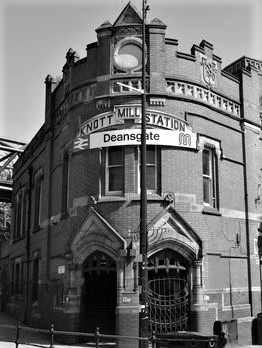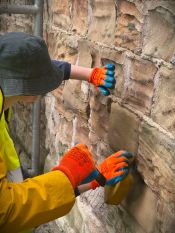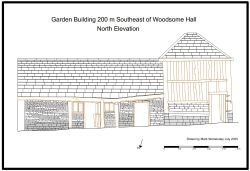M Womersleys have just completed mortar analysis from samples provided from Deansgate Station in Manchester.
M Womersleys have just completed mortar analysis from samples provided from Deansgate Station in Manchester. The station was opened as Knot Mill and Deansgate on 20 July 1849 by the Manchester, South Junction and Altrincham Railway near the Manchester terminus of the Bridgewater Canal from which in 1849 travellers could catch a fast packet which could get them to Liverpool in four and a half hours for as little as sixpence.

A public meeting in October 1884 complained that Knott Mill station was altogether inadequate for the newly improved district. Work started in March 1895 and was completed in September 1896; the latter year appears (in a shield) as part of the decorative stonework over the entrance. The station name is given there as simply "Knott Mill Station". The station is now a Grade II listed building. Its battlemented architectural feature, visible at its corner, is intended to mirror similar features in the nearby viaducts, all of which in turn incorporated the design in recognition of the Roman fort that once stood in the Castlefield area.
The mortar from various locations within the station area, which may date the late 19th century improvements was a lime rich early cement ash mortar. Ash being readily available waste product from the Victorian Period onwards. From the nature of the binding matrix of the mortar sample and from information gained from the analysis it is probable that the mortar was made up by volume from a combination of 1 part roman or early dicalcium silicate rich cement: to 2 parts ash which included within it a small amount of fine quartz sand.
Related Articles

The steps members of the Waterton’s Wall restoration team, with support from Mark Womersley, have been following to consolidate, conserve and repair this historic wall that represents the successful efforts of Charles Waterton to preserve the wildlife that lived on his estate near Wakefield in West Yorkshire.
1. Fill deep voids behind the wall’s facing stones with deep pointing work. The works involve …

Mark spent a day recording a historic timber-framed garden building at Woodsome Hall
Mark Womersley, as part of his voluntary work with the Yorkshire Vernacular Buildings Study Group, spent…

M Womersleys were delighted to offer a day of tutoring to those who attended the Wentworth Woodhouse Working Party
M Womersleys were delighted to offer a day of tutoring to those who attended the Wentworth Woodhouse…